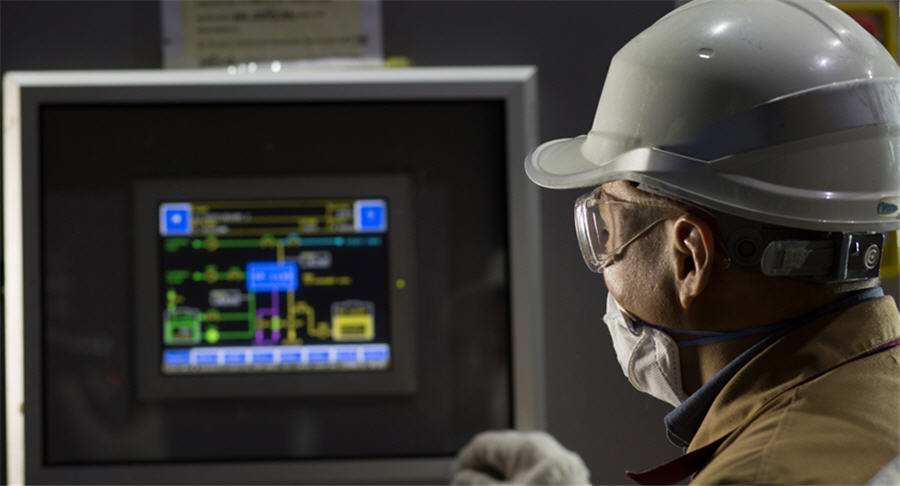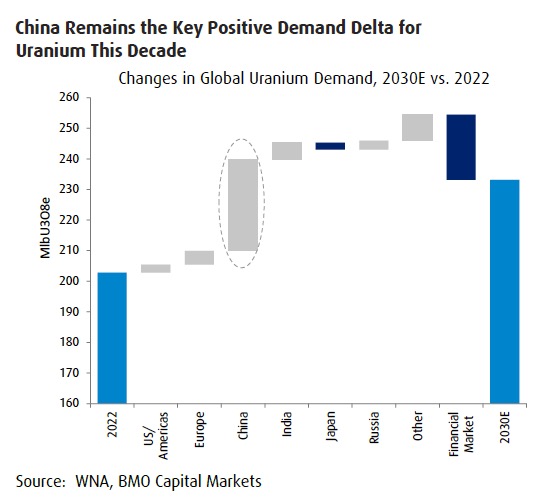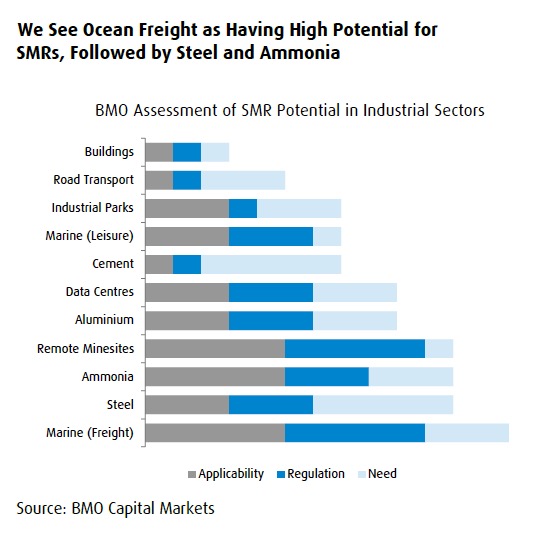
Uranium is officially in a bull market with a 20% rise in price so far in 2023, vastly outperforming other metals markets.
Uranium scaled $60 per pound on Friday for the first time since 2011. The breakthrough for the nuclear fuel after a decade in the doldrums coincided with the last day of the World Nuclear Symposium in London.
The World Nuclear Association’s (WNA) biennial report provides long and medium term projections and insights into the more obscure corners of the global supply chain.
The report has done little to worry uranium bulls, the ranks of which has grown large in the past couple of years, as the role nuclear could play in the green energy transition becomes obvious even to long term critics of the renewable source.
The WNA report predicts world reactor requirements for uranium to surge to almost 130,000 tonnes (~285 million pounds) in 2040. That’s up from an estimate of 65,650 tonnes in 2023.
Under the World Nuclear Association upper forecast that total rise to 184,300 tonnes and even its most pessimistic forecast – 87,000 tonnes in 2040 – translates to a healthy rise in demand for the commodity.
From the current 391 gigawatts electricity of operable nuclear plants, the WNA now projects capacity will reach 686 GW by 2040 under its base case scenario. It’s a hefty increase of 71 GW from the organisation’s estimates in its the 2021 report.

The bulk of new generating capacity will be located in China, which is aggressively pursuing nuclear energy to replace coal, which supplies the bulk of the country’s energy needs currently. The country has 23 reactors under construction, 23 planned and a further 168 proposed to add to its current operating fleet of 53 reactors. Worldwide 436 reactors are currently in operation and another 59 under construction.
Overall demand projections from the WNA have increased in the last update, with 4.1% CAGR demand growth expected through 2040, from 3.1% in its 2021 report.
The role small modular reactors can play in stoking demand has kept uranium watchers excited for decades, but now the promised spike in demand from these technologies are finally set to have a meaningful impact. Russia is a leader in the field with two floating SMR reactors entering commercial operation in 2020 and China is expected to turn the switch on a land-based reactor in 2025.
A significant portion of the WNA’s upward growth adjustments can be attributed to the accelerated adoption of SMRs and the body believes installed capacity will reach 31 GW by 2040.
In a note, BMO Capital Markets says the WNA’s forecasts for SMRs appear to conservative considering the potential of the technology’s use in everything from shipping to data centres.
The investment bank’s own forecasts point to 58GW of installed SMR capacity by the end of the next decade or around a tenth of nuclear generation capacity which is in line with the upper band of the WNA’s predictions.
BMO sees SMR boosting mining companies plans around decarbonisation of operations many of which are located in remote areas far from power grids. Many mines have replaced diesel generators with renewable sources like solar power, but for that you need ample space and the right climate:
“For others, particularly in colder climates such as Canada, we do see potential for micro-scale nuclear power solutions.

“Indeed, in much the same way as platinum producers are championing hydrogen-based trucks by installing them at their operations, we see an opportunity where uranium miners could potentially be pioneers in the use of SMRs.”
BMO believes remote mine sites have the best potential for SMR installations after marine freight and steelmaking.
The report was likely already at the printers when the coup in Niger grabbed newspaper headlines – but the WNA does point to “geopolitical instability, notably resulting from the Russia-Ukraine” resulting in increased interest in nuclear power for energy security and sovereignty.”
“The same instability has had significant implications for the globalized market for nuclear fuel cycle services, with utilities, suppliers and governments in North America and Europe pursuing opportunities to diversify supplies,” the WNA says.
WNA believes in the near term, secondary supplies of uranium will continue to play a role in bridging the gap between supply and demand as it has for more than three decades. But there is good news for miners longer term and the WNA acknowledges in its report the need for new greenfield uranium projects.
“However, secondary supply is projected to have a gradually diminishing role in the world market, decreasing from the current level in supplying 11-14% of reactor uranium requirements to 4-11% in 2050.“
Secondary supplies include, among others, reprocessed nuclear fuel, down blending of highly enriched uranium in nuclear weapons, tailing re-enrichment and stockpiles from oversupply between 1950–1970, BMO explains. BMO estimates roughly 3.7 years’ worth of reactor requirements are currently held as inventory.
Comments
William Jud
Thorium-fueled, Molten Salt Reactors also are coming online now and offer additional services as Small Modular Systems. For information contact Thorium Energy Alliance
https://thoriumenergyalliance.com/